A lucky jacket, a Leatherman, and some super skilled flying
- As the aircraft loses power over the trees above the Angus Sub, adrenaline takes over and Rombough coaches himself to, “Fly the airplane, fly the airplane, forget what’s going on around you, fly the airplane,” he says.
- If you look carefully you can see the bend in the lower phone/cable line as the airplane with landing gear lowering strikes the line.
- This spectacular series of photos were captured by Frank Martens as Ken Romboughs amphibian aircraft flies between hydro lines towards a fiery but safe landing in front of Kal Tire.
- It appears from this picture that the 3rd wheel on the landing gear failed to deploy.
- Initial contact with the ground leaves part of the plane’s wing behind.
- As the plane turns to face the flight path, the pilot realizes for the first time that the engine is on fire as flames track behind him on the road.
- As the fiery inferno engulfs the aircraft the lucky leather jacket lies on the ground.
- As the aircraft loses power over the trees above the Angus Sub, adrenaline takes over and Rombough coaches himself to, “Fly the airplane, fly the airplane, forget what’s going on around you, fly the airplane,” he says.
- Ken Rombough with the Leatherman that he believes may have saved his life
- Brandt Tractor employees were first on the scene. Ethan Ohlmann, Glen Ruggles, Frank Martens, Joe Vilac, Kevin McInnes, Travis Thomas, and Leo Nunes are shown surveying the damage.
Fort Nelson – Transport Canada received a distress call on Wednesday, September 25th at 3:08 pm. A privately registered Seawind 2000 departed Fort Nelson-Gordon Field airport and shortly after reported to Fort Nelson Flight Services the pilot had lost his engine and was inbound. The aircraft crashed at the intersection of 55th Street and 46th Avenue in Fort Nelson.
After tossing his old leather jacket on the seat beside him, and getting a reminder from son Rod and friend Tammy, Ken Rombough took off on Wednesday September 25th to deliver his Seawind 2000 aircraft to Ritchie Bros, Grande Prairie for its October 2nd auction.
Shortly after 3pm, Rombough headed north out of Gordon Airfield at Mile 302.5 Old Alaska Highway, an airfield now owned by the Rombough family. He took off heading north (west) before turning to take up a south (east) direction towards Grande Prairie. He lined up on the familiar hills between Fort Nelson and Fort St. John and was climbing to altitude after retracting his landing gear and reducing power when he heard an almighty bang. The bang was heard by several residents at Mile 301 of the Old Alaska Highway, only one mile and seconds away from the air strip. The plane shuttered violently for a second or two. He looked at his gauges and discovered he had no oil pressure and had lost RPMs.
“I hit my mic button and called the airport. ‘I have an engine failure, I need to get on the airport right away.’ I got the nose lined up for the airport, and thought to myself, ‘just keep going you son-of-a-gun.’ I was only at a few hundred feet [altitude] at this point. 30-40 seconds after [the bang]…the engine quit completely. I punched the button [mic], ‘I’m not going to make it to the airport.’ I couldn’t hear myself in my headphones I realized I had no electrical power and no radios. “This thing stalls at 64 mph [quite a high speed] so I needed to keep pushing the nose down [to keep the aircraft in the air and avoid stalling]. I was at 500-600 feet and had damn near stalled the airplane above the trees, so I headed for lower ground. In desperation I kept turning a little further south. When I passed the towers [in the Angus Two subdivision] I was about 2/3 the way down the tower.”
He was heading towards the south using the descending slope of the Simpson Trail hill to keep distance between his aircraft and the ground and he focussed on “Main street, at least there are no houses, I’ll put her down on the highway,” he thought. He was coming in at an angle to the highway and descending without power. He knew he wouldn’t be able to make the turn to line up on the highway.
“Over top of the Rec Centre, I realised I needed to take to the dump road. I could see three sets of wires. I was high enough to miss the first set of wires. To get over the second set of wires I sacrificed momentum and pulled up and got over. At the 3rd set I thought ‘I’m not going to get under it,’ so I knew I was going between those two wires on the pole. I didn’t see the middle wire, a hydro ground, it was a lighter colour. . It grabbed the landing gear and I thought ‘it stalled and I’m way too high to be stalling.’”
As Rombough hit the wires, the aircraft tilted downward and he “smashed to the ground. I was grabbed at the hydro pole height so I was fired into the ground.”
“The right wing tip broke away and was left down the flight path and the left landing gear was compromised on the initial impact of the crash.”
Rombough thinks it either didn’t extend completely because of the lack of power or was driven up into the wing on impact. The left wing then impacted a driveway and made the airplane turn as it skidded down the road. It was at this point that Rombough was able to see behind him and saw the trail of fire that was travelling along the road towards him. “ It was only at this point I realised I was on fire.” Unitl then, vRombough says all he could smell was an oily smell as he passed the tower further up the flight path.
“When the fuel from the damaged wing tank ignited the whole inside of the canopy went ‘whoof’ and went black with smoke. I don’t think I had the belt off. The seatbelt in this aircraft is a harness with four straps joined by one buckle and the canopy has a two stage release system – one activated by a lever begtween the seats the other the second one, a latch opening of the left side of the canopy that you have to manually release in order to open it fully. This is much like a hood latch on a vehicle.
“I took 2-3 gulps and pretty near blacked out, the heat was so hot I thought I was on fire.” Rombough remembers having had trouble releasing the latch when he flew the aircraft earlier that year at Maxhamish Lake. “I had to use my Leatherman to assist me with lifting the lever between the seats.
The lightning bolt of panic that went through me was, ‘I am trapped’’. “
He must have used the same technique to release the latch during the fire as the Leatherman was found after the fire in the open position on the floor of the fuselage. His carrying pouch had been ripped open and the control column in front of the right seat (Rombough was flying in the left seat ‘pilot in command’ position) had been broken.
As his upper left arm was injured with deep indentations along it, Rombough feels he must have reached over to the right set of controls to give himself more leverage to open the difficult canopy lever and must not have released the harness restraint at that point either, which did the damage to his upper arm.
“I remember smashing into the canopy with my head, I am thinking I am on fire, everything was so hot. The nurse at the hospital said my hair was singed.
“When I rolled out onto the ground, what do I have in my hand but my old leather jacket.”
His wife Chris calls it’s his ‘lucky’ leather jacket…seems to have served him well this trip.
Well, credit needs to be given not only to the lucky jacket, but also to Rombough’s skill as an accomplished bush pilot who has landed on many roads while living in Manitoba and on rough airstrips put in by oil companies when he worked as a gas well operator around the Fort Nelson area over the last 40 years.
Presently, he shares his time between his Carcross, Yukon, home and Fort Nelson where he continues to work with his son, Rod.
Over the years he has continued to take courses and increases his knowledge base concerning aviation and aviation safety. He and Chris recently took egress or escape training at a ‘dunker’ course designed for float plane pilots, that he credits with contributing to the happy conclusion of the very serious event. As 80% of aviation fatalities involving water result from drowning. The course, designed to teach how to escape downed or submerged aircraft may have put into muscle memory the escape procedure he used to successfully extricate himself from under the canopy. He likes to think the course just paid off and he recommends everyone who flies take this type of training if possible.
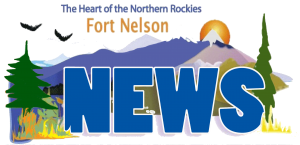

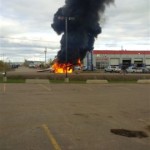
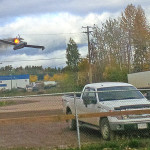
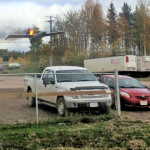
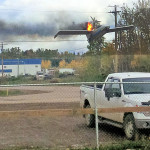
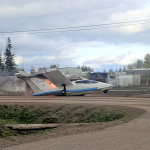
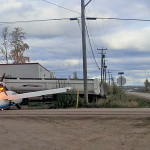
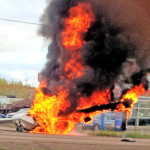
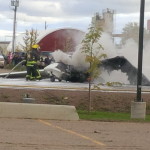
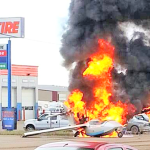
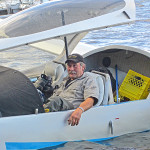
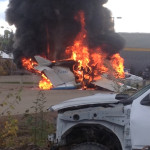
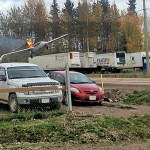
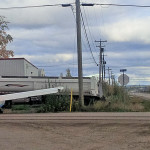
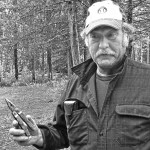
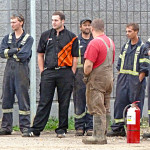
 Follow
Follow



Recent Comments